Live Radar
Live Traffic Updates
Live Radar Live Traffic Updates |
| Classifieds
| Jobs
| Travel
Deals
| Subscribe
| Past
7 Days
| Archives
| Contact
Us Thursday, March 20, 2003 |
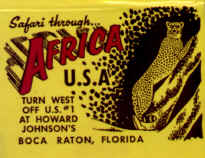  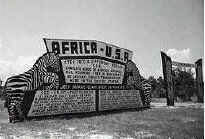 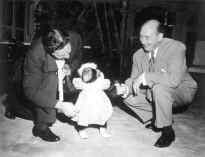 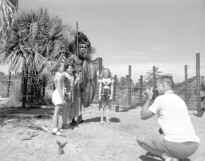 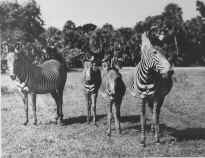 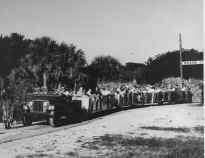 |
When wild animals roamed
Boca By Elliot Kleinberg, Palm Beach Post Staff Writer
The Watusi Geyser is long gone. But once, the quiet Camino Gardens neighborhood, west of downtown, was a mysterious land of exotic beasts and lush tropical vegetation. On Saturday, residents of the neighborhood that rose from what had been Africa U.S.A. will gather to mark the 50th anniversary of the opening of Florida's first wild animal park. A plaque will mark the lagoon and the rusted base of the 260-foot geyser. They are the only surviving remnants of the park, which predated Lion Country Safari by 15 years and pushed an obscure California competitor named Disneyland off the front page of Life magazine in 1960. Ginger Pedersen will be there. The 39-year-old Palm Beach Community College associate dean has almost single-handedly kept alive her grandfather's vision, even though the park was closed by the time she was born. She's gathered scrapbooks and old movies. And her Web page, www.africa-usa.com, details the history of the park, which operated from 1953 to '61, and gives behind-the-scenes views. It also gives former visitors a chance to submit their memories. Not long after World War II, John P. "Pete" Pedersen had an idea to spice up the then-quiet hamlet of Boca Raton. He bought 300 acres, planted thousands of tropical trees and built a 30-foot waterfall, and sent his son -- Ginger's dad -- to Africa to bring back animals who roamed free inside double 8-foot fences. Africa U.S.A. opened in February 1953, luring tourists with billboards mounted up and down the state, including one on Federal Highway in Deerfield Beach, which directed tourists with a giant arrow. The 177-acre spread, one of Florida's original wild animal attractions, drew as many as 2,000 tourists a day. Admission was free, but visitors paid to ride trams for a 6-mile, one-hour tour of Tanganyika Territory, the country Pedersen invented. At Jungle Town, visitors were greeted by "Masai Warriors," most of whom commuted from nearby Pompano Beach. Pedersen wanted his own "Old Faithful," so he created the Watusi geyser by building a hill and connecting the pipes to the pump assembly that ran the waterfall. The geyser went off every 35 minutes but could be turned on at any time. By the early 1960s, the suburbs crept in. Pedersen later had an extended zoning battle with the city. And early in 1961, federal agriculture agents found the first-ever North American outbreak of African red ticks. Pedersen had to destroy thousands of dollars' worth of animals. Fed up, he sent off his animals and closed down. In October 1961, he sold the land, which he had bought for about $10,000, to developers for $1.1 million.
|
Copyright
© 2003, The Palm Beach Post. All rights reserved. |